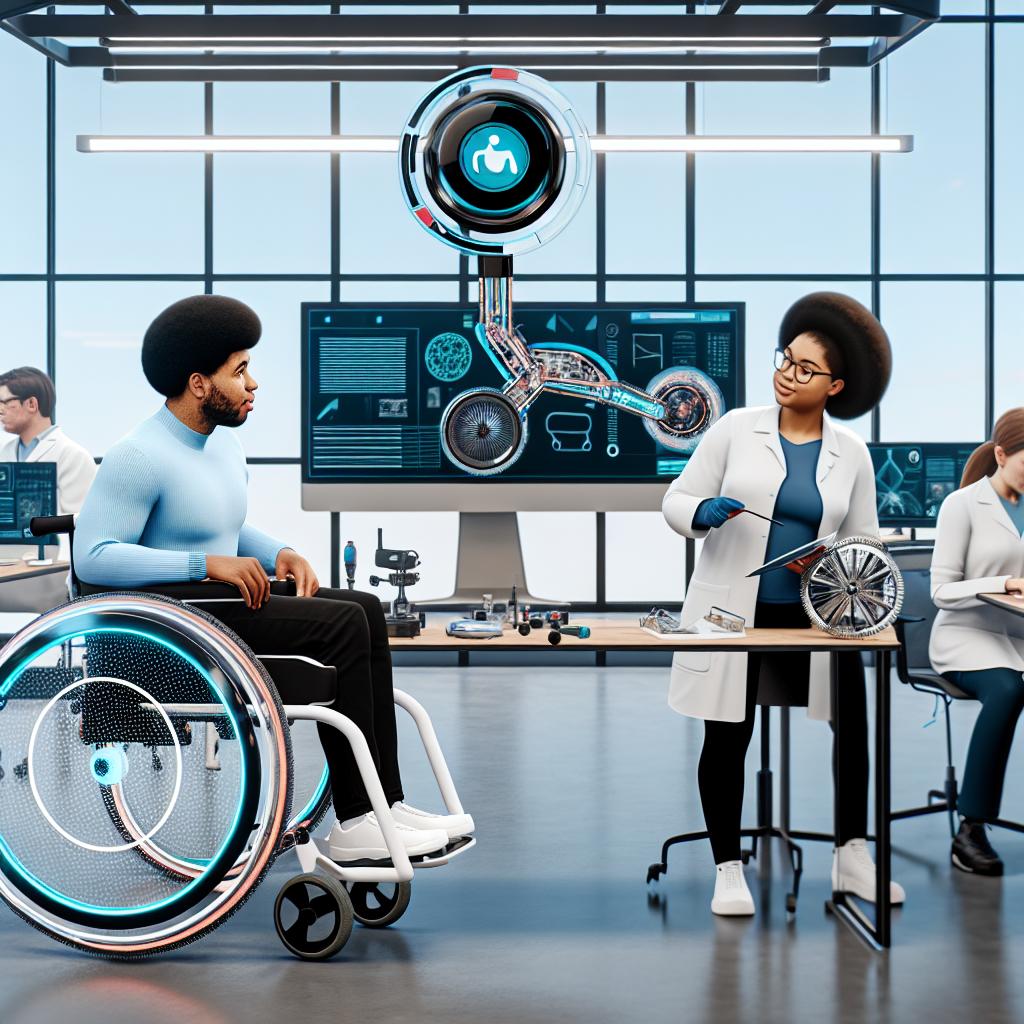Advancements in Smart Wheelchairs
Smart wheelchairs have become a pivotal component in transforming mobility for individuals with disabilities. Integrating advanced technologies into these devices is markedly enhancing usability by improving accessibility and independence for users. These innovations are primarily being driven by rapid developments in key areas including robotics, artificial intelligence (AI), and the Internet of Things (IoT). Below, we delve into the various aspects that contribute to the evolution of smart wheelchairs, examining how each facet empowers users and improves their quality of life.
Enhanced Navigation and Obstacle Avoidance
In today’s world, navigating complex environments is crucial for the users of smart wheelchairs who wish to gain independence. Modern smart wheelchairs are designed with state-of-the-art sensory systems that include technologies such as ultrasound, infrared, and LIDAR. These sensors work together to detect obstacles within the path of the wheelchair, allowing it to plot safe and efficient routes. They serve as the key components of these vehicles, interpreting environmental data continuously.
AI algorithms process the sensory data in real time, allowing the wheelchair to autonomously decide on the best paths to traverse. This real-time processing ability ensures a smooth and safe journey even in dynamic environments that may present unexpected obstacles. The seamless integration of sensors and AI empowers wheelchairs to handle complex navigational tasks without requiring constant manual intervention. For individuals using these wheelchairs, this means enhanced mobility and the freedom to explore new spaces with confidence.
Integration with Smart Home Systems
The convergence of smart wheelchairs with smart home technology represents a significant leap forward in providing autonomy for individuals with disabilities. Smart wheelchairs now possess the ability to interface directly with home automation systems. This connectivity enables users to control a multitude of household devices directly from their wheelchair interfaces. Such devices can include lighting systems, televisions, thermostats, and more.
The ease with which users can manage their home environment translates into a higher degree of self-reliance. With the ability to command various aspects of their living spaces, users of smart wheelchairs can maintain comfort and convenience at their fingertips without external assistance.
Voice-Controlled Interfaces
A remarkable advancement in smart wheelchair technology is the adoption and refinement of voice-controlled interfaces. The development of sophisticated voice recognition systems has allowed for hands-free operation, reducing physical barriers for users. By integrating digital assistants such as Amazon Alexa and Google Assistant, these systems ensure smooth and consistent connectivity with smart home devices.
Voice-controlled interfaces are adept at interpreting a wide range of commands with accuracy, enabling users to exert greater control over both the wheelchair functionality and their immediate surroundings. As such, these interfaces greatly contribute to the empowerment of users, providing them with the ability to perform multiple tasks and coordinate their environment effortlessly merely through verbal instructions.
Health Monitoring and Data Collection
Another transformative feature included in many smart wheelchairs is the ability to monitor health parameters. The integration of health monitoring technologies is playing an increasingly critical role in supporting daily health management for individuals who require continuous care. Embedded sensors within these wheelchairs can track vital signs, including heart rate and blood pressure, autonomously.
The data collected from these health monitoring systems can be transmitted securely to healthcare providers, allowing for ongoing observation and intervention when necessary. Alternatively, data can also be stored in safe cloud environments, creating a persistent healthcare record that is accessible for review.
Moreover, select smart wheelchairs provide real-time feedback to the user on their health status, alerting them if there are any health metrics that deviate from the norm. This capability of delivering actionable insights can prompt proactive management of health issues, particularly beneficial for individuals with chronic conditions.
Security and Privacy Concerns
The increasing interconnectivity and reliance on data usage in smart wheelchairs also bring about pressing issues relating to security and privacy. To address these concerns effectively, manufacturers are implementing robust encryption methods designed to safeguard data integrity and confidentiality.
It is critical for users to remain vigilant regarding permissions and data sharing protocols related to their devices. Ensuring that their smart wheelchairs are equipped with the latest security updates and firmware is essential for protecting personal information. Users should regularly review privacy settings and limit data exposure to only what is necessary for functionality, consequently reducing potential vulnerabilities in their systems.
Customization and Personalization
One of the defining advantages of modern smart wheelchairs is the opportunity for extensive customization and personalization. Each user can tailor the device to meet their unique needs and preferences, ensuring that it aligns closely with their lifestyle and mobility requirements.
Customizable features often include seating arrangements that can be adjusted to enhance comfort and support, programmable driving modes that cater to a variety of environments, and personalized interfaces designed for ease of use. These aspects not only contribute significantly to improved comfort but also ensure users are able to maximize their interaction with the device, ultimately enriching the user experience considerably.
In conclusion, the ongoing innovations seen in smart wheelchair technology are establishing new thresholds for accessibility. These cutting-edge devices are bringing forth enhanced mobility solutions while simultaneously contributing significantly to the overall quality of life for their users. With consistent progress in research and development, it is expected that future smart wheelchairs will encompass even more advanced features, bestowing an even higher degree of independence and functionality to their users. For individuals interested in further exploring the emerging technologies and advancements within the realm of smart wheelchairs, resources are available at outlets such as TechTarget.
